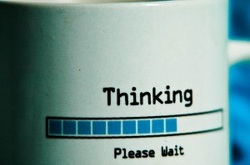
As many of us do, Gilbert P. Hyatt–a Las Vegas–based inventor–decided at the beginning of this year that it was time to make a change. In a bid to get the US Patent and Trademark Office (PTO) to stop procrastinating their approval of two of his pending patent applications, Hyatt sued the agency, demanding that they make a decision, one way or the other. According to the PTO’s latest statistics on their website, there is a current backlog of over 600,000 unexamined patent applications; so clearly, they are very busy. However, with that same dashboard showing that the average turnaround time for a patent request is currently a shade over 28 months, the 35- and 43-year waits in Hyatt’s case do seem a bit exaggerated. In fact, the PTO has not granted Hyatt any patents at all since 1997, which he believes is indicative of their unofficial policy to keep him at bay in a never-ending loop of reopened prosecutions, examinations, and appeals, according to his January filing. What could be holding them back?
The two long-pending patents in question are for technology relating to liquid crystal displays, and controlling machinery using electronic signals. Much like the early microprocessor (the “single chip integrated circuit computer architecture” which Hyatt successfully—and very lucratively—patented in 1990 after a 20-year wait), these technologies are used so ubiquitously now, one would be hard-pressed to assign a value to the amount of money Hyatt stands to make via licensing if either or both of the unresolved patents were to be approved. Hyatt has a fairly consistent history of getting his way in court, as well, and it seems as though the PTO is wary of setting down a judgment rejecting his applications, as they know he would immediately take it to the board of appeals. He’s taken the agency itself to court 10 times, after they denied some of his patent requests; he even prevailed in a 2012 Supreme Court case against them regarding patent applicants’ evidentiary restrictions in district court cases. It’s no surprise, then, that theirs is a strained relationship. Furthermore, there is the argument that, while Hyatt may have put the ideas on paper, he did not follow that up with actual scientific development or invention. Some allege that he staked claims on technological inevitabilities, and left the actual innovation to others until it was advanced enough to come out as finished products for which he could demand credit (and licensing fees).
Due to a law keeping older patent applications confidential, it is nearly impossible to research Hyatt’s two pending applications. And since Hyatt himself is reluctant to discuss their content, there is no good way to determine whether they were so broad as to have potentially-monumental impact on the entire technology industry, or if they involved more specifically-focused implementations of his then-(supposedly)-innovative technology. Hyatt is due to turn 76 this month, which means that he has essentially spent over half his lifetime waiting for these patents to be granted. Considering how long the PTO has been methodically giving him the runaround, it is unlikely that Hyatt’s recent lawsuit will suddenly put them in the mood to grant him any long-overdue birthday presents.
The two long-pending patents in question are for technology relating to liquid crystal displays, and controlling machinery using electronic signals. Much like the early microprocessor (the “single chip integrated circuit computer architecture” which Hyatt successfully—and very lucratively—patented in 1990 after a 20-year wait), these technologies are used so ubiquitously now, one would be hard-pressed to assign a value to the amount of money Hyatt stands to make via licensing if either or both of the unresolved patents were to be approved. Hyatt has a fairly consistent history of getting his way in court, as well, and it seems as though the PTO is wary of setting down a judgment rejecting his applications, as they know he would immediately take it to the board of appeals. He’s taken the agency itself to court 10 times, after they denied some of his patent requests; he even prevailed in a 2012 Supreme Court case against them regarding patent applicants’ evidentiary restrictions in district court cases. It’s no surprise, then, that theirs is a strained relationship. Furthermore, there is the argument that, while Hyatt may have put the ideas on paper, he did not follow that up with actual scientific development or invention. Some allege that he staked claims on technological inevitabilities, and left the actual innovation to others until it was advanced enough to come out as finished products for which he could demand credit (and licensing fees).
Due to a law keeping older patent applications confidential, it is nearly impossible to research Hyatt’s two pending applications. And since Hyatt himself is reluctant to discuss their content, there is no good way to determine whether they were so broad as to have potentially-monumental impact on the entire technology industry, or if they involved more specifically-focused implementations of his then-(supposedly)-innovative technology. Hyatt is due to turn 76 this month, which means that he has essentially spent over half his lifetime waiting for these patents to be granted. Considering how long the PTO has been methodically giving him the runaround, it is unlikely that Hyatt’s recent lawsuit will suddenly put them in the mood to grant him any long-overdue birthday presents.
